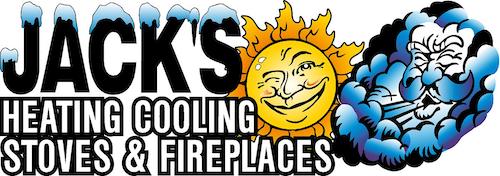
If you’re needing air conditioner installation in Alliance, you should also be looking at your new air conditioner’s SEER rating.
SEER stands for Seasonal Energy Efficiency Rating. In a nutshell, it examines how capable your air conditioner is at converting electricity into chilled air. A bigger number means your air conditioner is more efficient, which is great for your energy expenses.
However, there are many varying solutions available for air conditioners. And a better SEER ranking typically involves a bigger price tag. So, how do you know which one is ideal for your residence?
At Jack's Heating, Cooling, Stoves & Fireplaces, we offer a free, no-pressure home comfort analysis. You can get one by contacting us at 308-762-1613. Our skilled air conditioner installers will partner with you to help you find the right air conditioner for your family. Plus, they’ll also give you a free, no-obligation estimate.
Right now, let’s review SEER ratings and how they can impact your family’s comfort. And your electric expenses.
What Does the SEER Rating Even Matter?
In 2016, the federal government made new SEER criteria. New air conditioners are mandated at minimum 13 SEER in the northern United States and 14 SEER in the southeast and southwest. If you don’t know when you had your air conditioner replaced or what its SEER ranking is, you can look at the sticker on the unit outside your house. If you can’t see the sticker, you can reach us at 308-762-1613 for support.
If your air conditioner was put in in advance of that time, it’s presumably much less efficient. Cooling technology has swiftly evolved in the past several years, with major advancements in energy efficiency and smart home capacity. Pairing your new air conditioner with a smart thermostat could help you conserve more on cooling bills, because the thermostat can automatically adjust your temperature settings when you’re out.
If your present air conditioner has a SEER rating between 8 and 10, adding a 14-SEER system could save you close to 30–50% on annual air conditioning costs. Your savings are contingent upon your air conditioner size and your temperature settings.
Is a Higher SEER Rating Always Better?
An air conditioner with a higher SEER rating will be more efficient at consuming electricity for cooling. The best efficient models, which can go as great as 26 SEER, have ENERGY STAR® designation. This certification means the air conditioner has achieved EPA requirements for energy savings and environmental conservation.
While ENERGY STAR air conditioners are frequently more expensive, you’ll normally get the difference back over time through cheaper air conditioning bills. These air conditioners, which are typically rated 16 SEER and better, consume about 8% less power than other new systems, according to ENERGY STAR.
One of the largest differences between a 14 SEER and 16 SEER is variable-speed capacity. A variable-speed air conditioner can run at different speeds. This refines comfort for your residence while keeping your energy expenses reduced. It can also keep temperatures and humidity more even, since it can work for longer without requiring a lot more energy.
When getting a variable-speed air conditioner, you’ll want to make sure that your furnace or air handler is compatible. This is due to the fact your air conditioner uses this system’s blower to send cool air around your home. Furnaces only work for around 20 years, so if yours is around that age, we suggest getting furnace installation at the same time so you can enjoy all the benefits of your variable-speed air conditioner.
When you’re ready to replace your air conditioner, the cooling professionals at Jack's Heating, Cooling, Stoves & Fireplaces are available to assist you. Call us at 308-762-1613 to set your free home comfort analysis right away.
